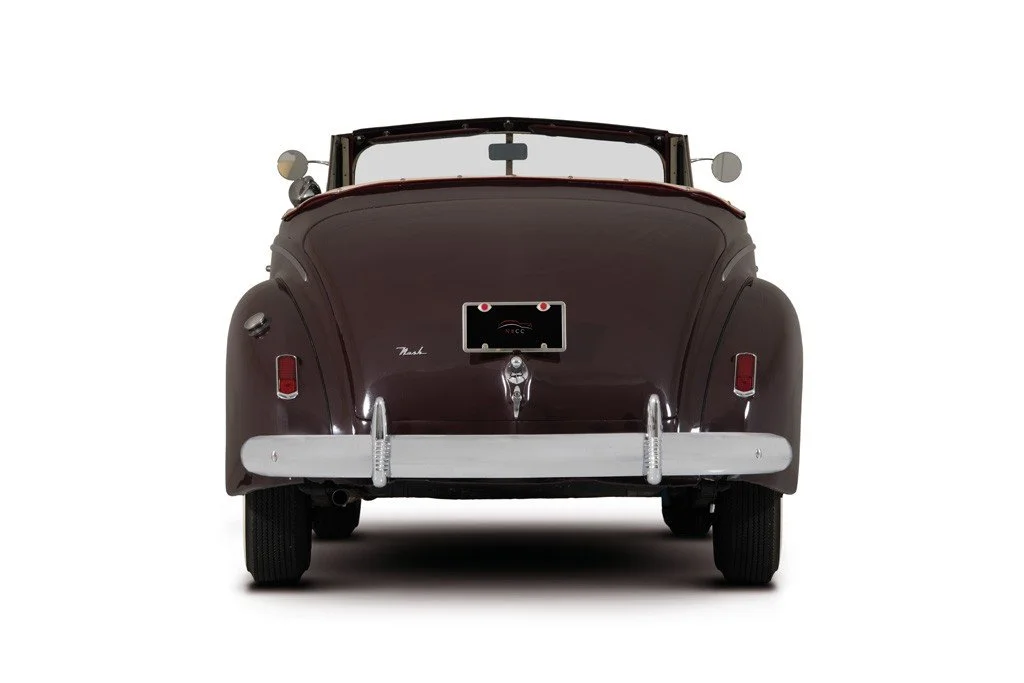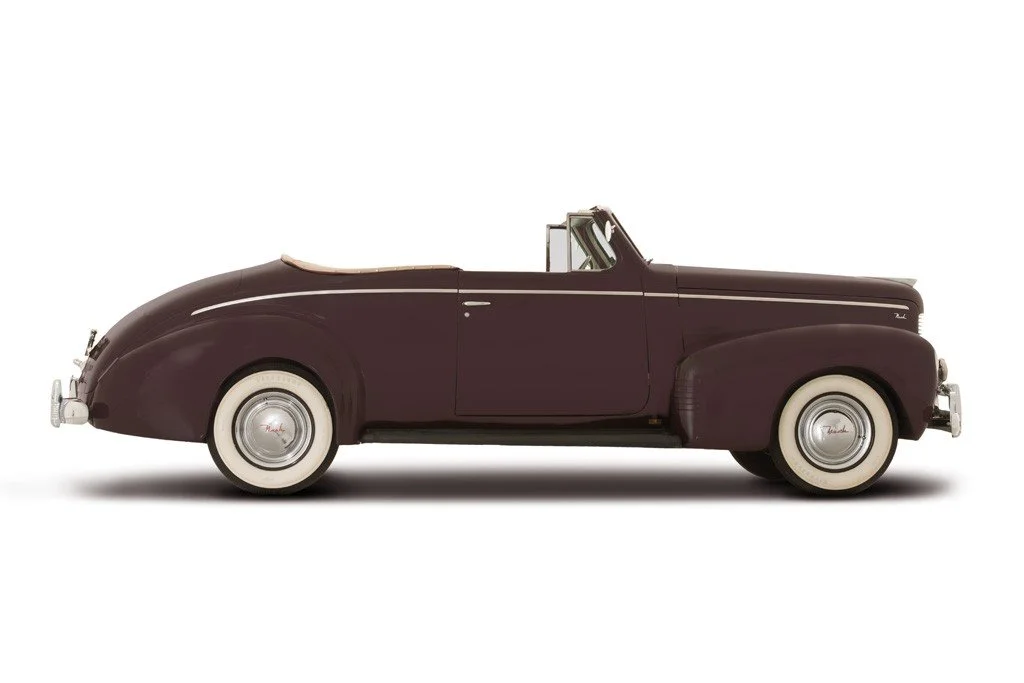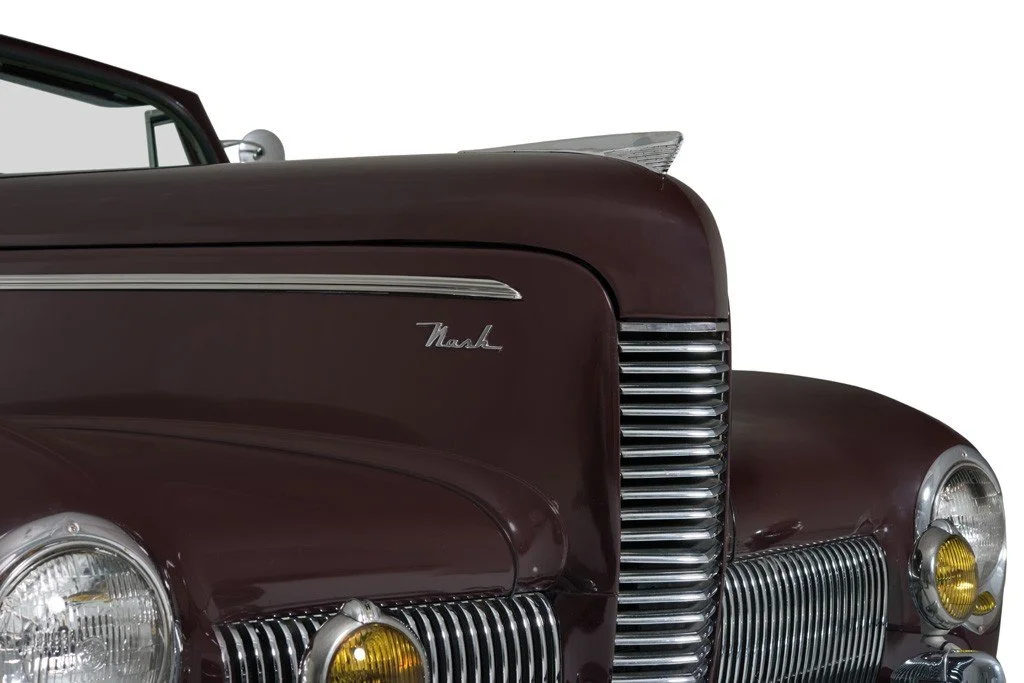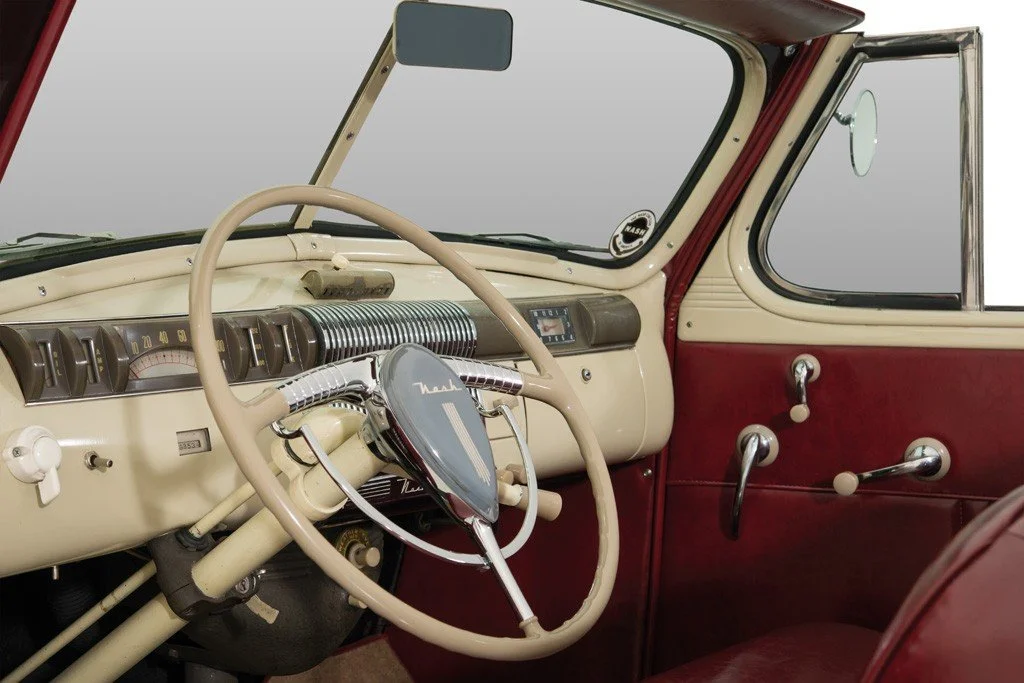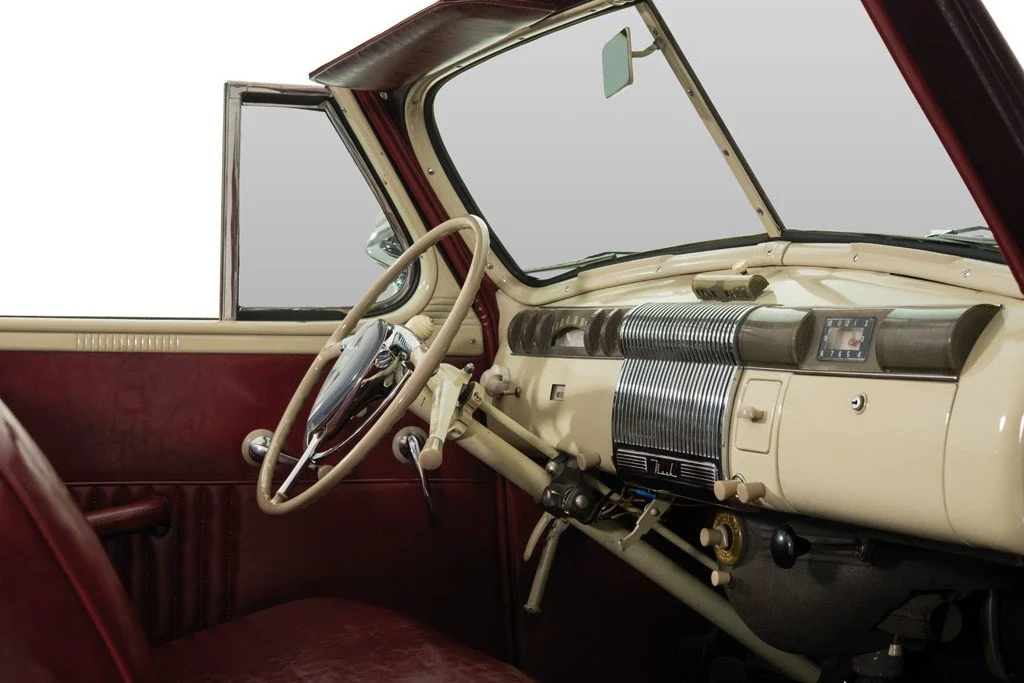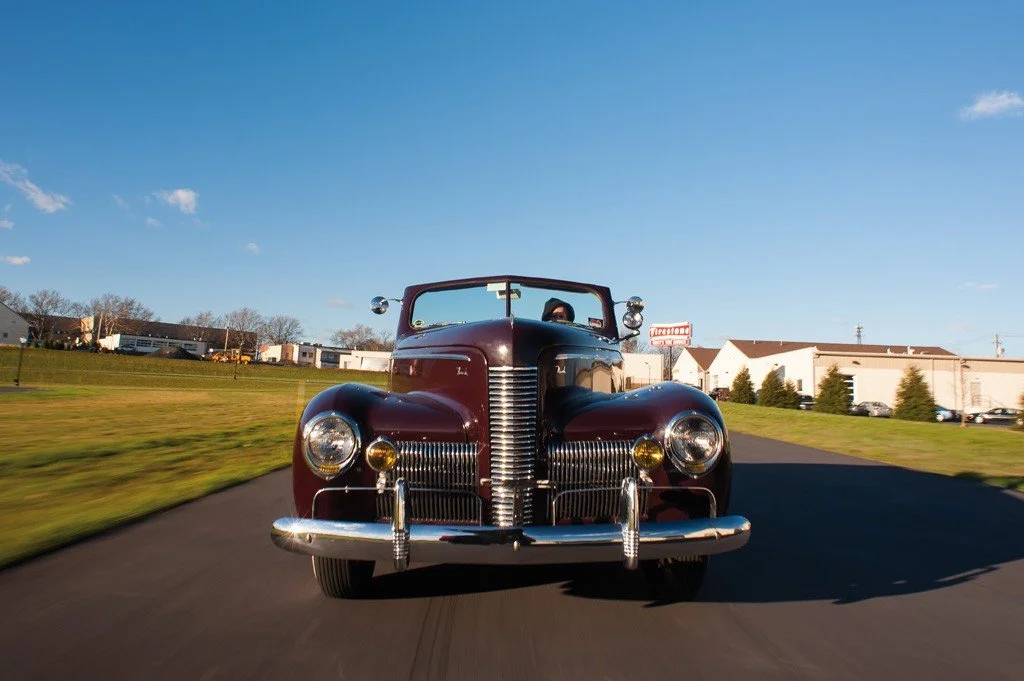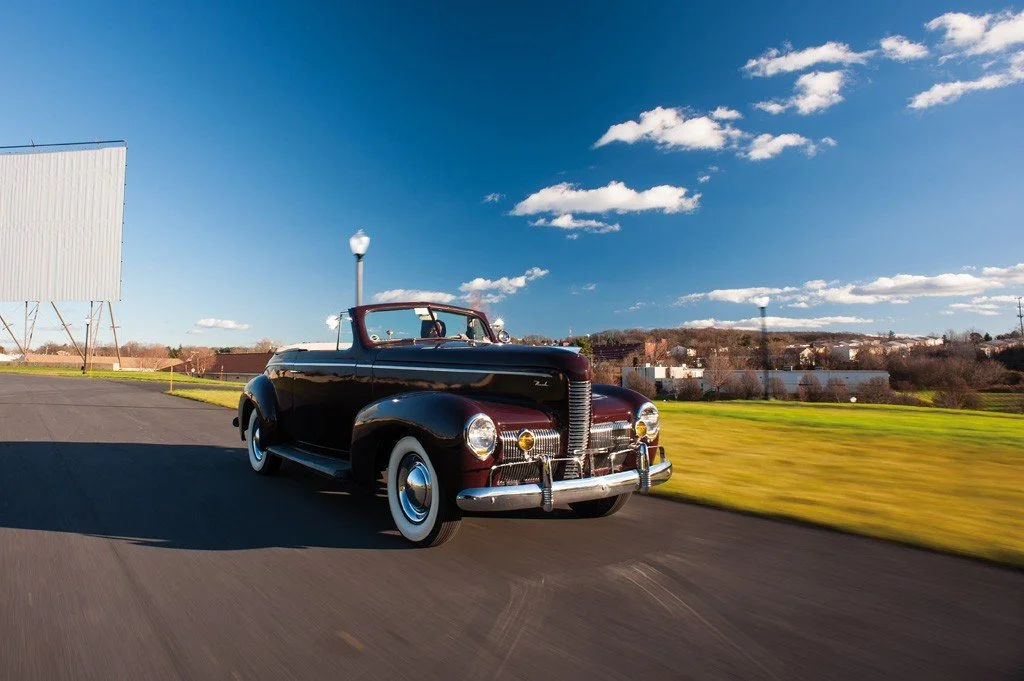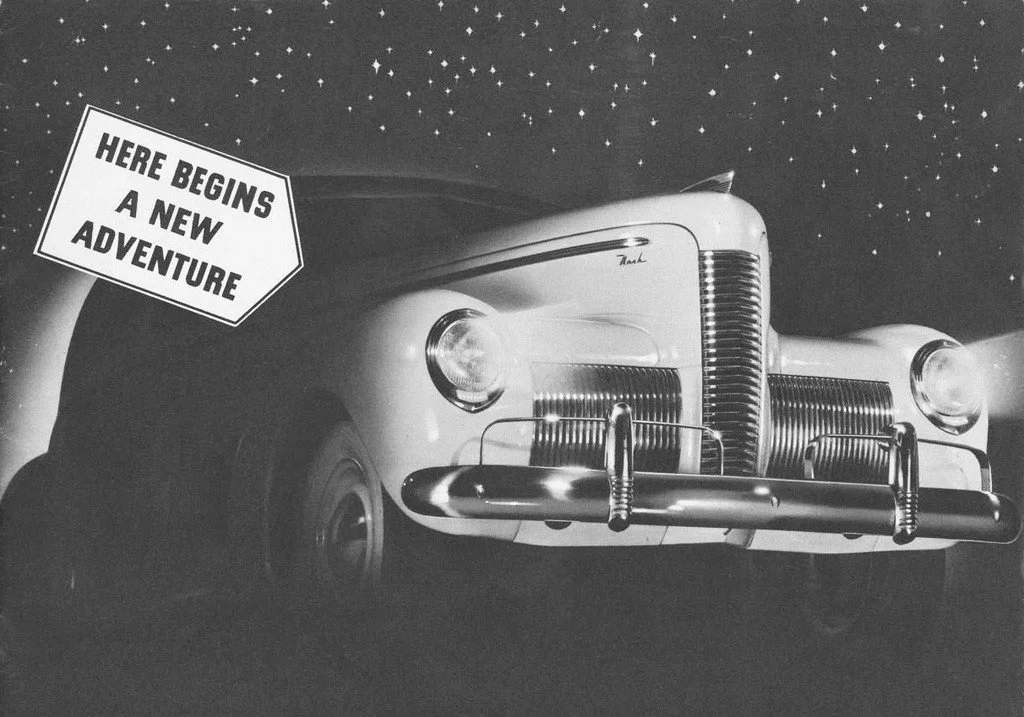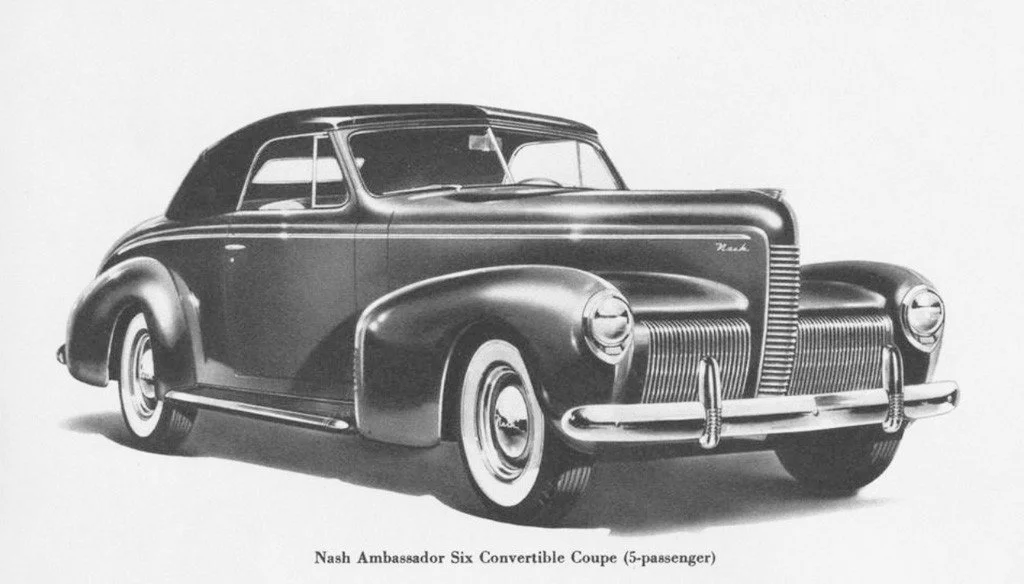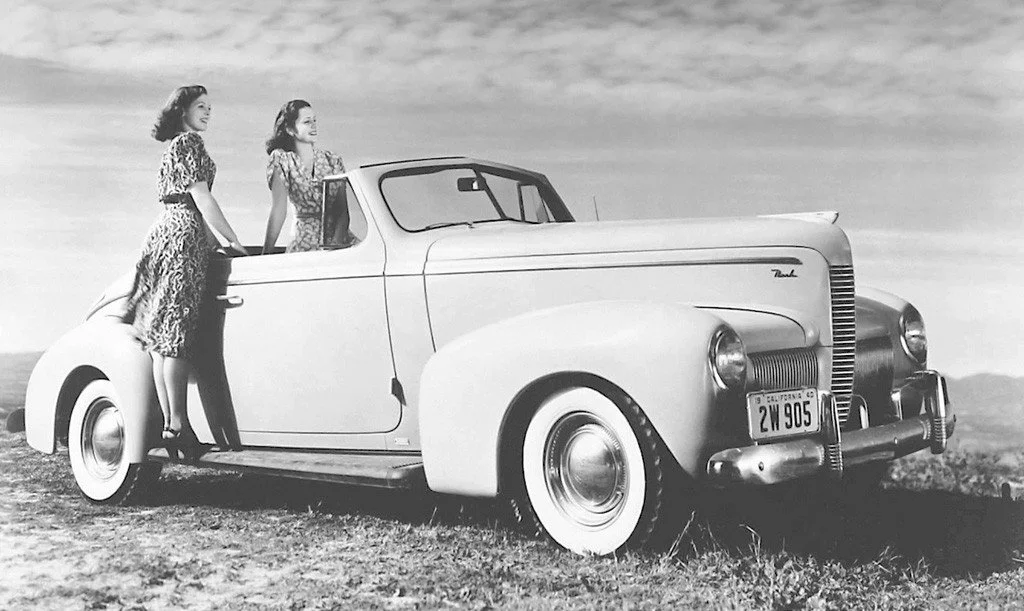-
Mr Bulgari saw the car in an ad in an English magazine while at the airport in the UK. He called Keith from Precision Motor Cars to investigate the car, and Keith in turn flew to the UK to view the Nash in Southampton, England. The car was in very bad condition, though the seller thought it was perfect and it was priced accordingly. At the time, the decision was made not to purchase the car, but the Nash was followed to its new owner in Michigan, USA. The car was then traded to another owner in Virginia for two vehicles. Finally, the car was purchased by Nicola Bulgari Car Collection from the owner in Virginia in 2012 for about a quarter of the asking price in the United Kingdom.
This Nash is the only know surviving specimen of the 206 Ambassador Six Convertible Coupes (Model 4021) originally built, and is still awaiting restoration by the crew at Precision Motor Cars. The body was repainted in a Maroon color, while the interior was redone in Red leather, respecting its original state. -
Company
Nash Motor CompanyWheelbase
121inInterior trim
Red leatherBrakes
front and rear drumsMake
NashLength
204inEngine
inline 6 - 234,8cidTires
6.25x16Model
Ambassador Six - Model 4021Width
73inCarburetor
1 Carter 435SOriginal Price
$1,085Body style
2-door convertible coupeWeight
3410lbsHorsepower
105hp @ 3400rpmProduction
206Model year
1940Exterior paint
MaroonTransmission
Synchro-shift 3-speed manual -
Nash's slogan from the late 1920s and 1930s was "Give the customer more than he has paid for", and the cars lived up to it. After resigning from the General Motors presidency, Charles W. Nash founded the company bearing his name in 1916, and his firm belief was to offer on his most affordable cars many features that were standard only on the more expensive vehicles. Innovations included a straight-eight engine with overhead valves, twin spark plugs, and nine crankshaft bearings in 1930. The 1932 Ambassador Eight had a synchromesh transmission and free-wheeling, automatic centralized chassis lubrication, a worm-drive rear end, and its suspension was adjustable inside the car. In the following years, features like shatterproof glass, free-wheeling, synchronized gears in the transmission, cowl-ventilation and dash mounted ignition switch were standard even on the lowest priced models, allowing the Nash Motor Company to achieve a good sales success. When he decided to retire, Charles Nash asked his good friend and Kelvinator president George W. Mason, to succeed him in 1937. The only stipulation would be that the two companies would merge into one, with Mason taking over as president. The Kelvinator expertise in heating systems was applied to the automotive field with the introduction in 1938 of an optional conditioned air heating/ventilation system. It was the first hot-water car heater to draw fresh air from outside the car, and its principles are the basis of all modern car heaters in use today. Also in 1938, Nash, along with other car manufacturers Studebaker and Graham, offered vacuum-controlled shifting, an early approach at removing the gearshift from the front floorboards. Automobiles equipped with the Automatic Vacuum Shift (supplied by the Evans Products Company) had a small gear selector handle mounted on the dashboard, immediately below the radio controls.
In 1939 Nash added a thermostat to its “Conditioned Air System” and thus the famous “Nash Weather Eye” was born. This year’s models were completely redesigned, with a new front end that featured flush-fitting headlights and a vertical grille very reminiscent of the LaSalle marquee. The total design incorporated the best art-deco styling both in the exterior and interior details.
The 1939 and 1940 Nash streamlined cars were designed by George Walker and Associates with the assistance of freelance body stylist Don Mortrude. They were available in three series, LaFayette, Ambassador Six and Ambassador Eight, all built with the same body but with a different wheelbase and longer front fenders and hood. It was a clever way to rationalize the construction process, but at the same time, even the high-end models looked like the cheapest offerings.
For the 1940 model year, Nash introduced independent coil spring front suspension and sealed beam headlights, while retaining the most advanced features, like “Twin Ignition” and overhead valves on the inline six and eight cylinder engines. Another new feature was the “Clutch Starter”, where the engine was started by pressing the clutch pedal. Sales were good but not outstanding, due to the strong competition on the market, and the lack of differences on the outside between the cheap LaFayette and the expensive Ambassador Eight.



